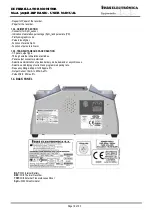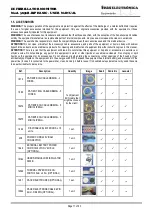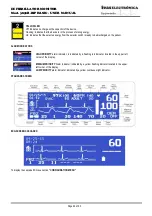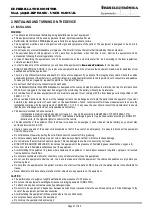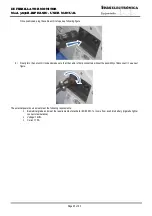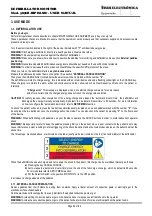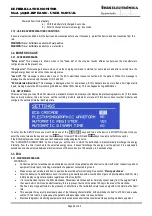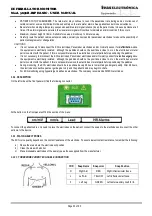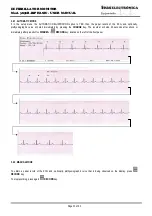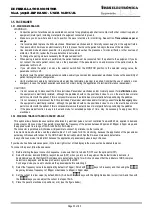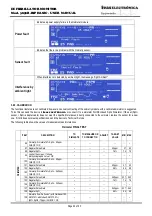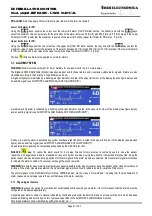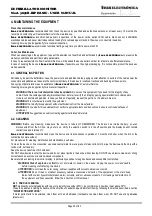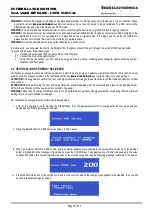
DEFIBRILLATOR MONITOR
Mod. 3850B-BIPHASIC - USER MANUAL
Page 30 of 63
•
PATIENTS WITH PACEMAKERS. The rate meter may continue to count the pacemaker rate during some occurrences of
cardiac arrest or some arrhythmias. Not based entirely on the rate meter alarms. Keep patients under close surveillance.
•
Be careful when making a temporary suspension audible alarm signal (silence), keep the patient under close surveillance at all
times. If the alarm signals are selected, the visual alarm signal will continue to indicate an alarm condition if this occurs.
•
Maximum channel height: 21.2mm. Suitable for use as a monitor up to 2 meters away.
•
Carefully route the patient cables, extension cables, oximetry sensors and/or pacemaker electrodes to reduce the possibility of
patient entanglement or strangulation.
CAUTIONS
•
It is not necessary to disconnect the ECG electrodes, Pacemaker electrodes and/or Oximetry sensor for defibrillation since
the equipment is electrically isolated; although the paddles should not be positioned close to or on the electrodes or metal
parts in contact with the patient, if this is not possible remove the electrodes or metal parts before positioning the paddles.
•
It is not necessary to disconnect the ECG electrodes, Pacemaker electrodes and/or Oximetry sensor for electrosurgery since
the equipment is electrically isolated; although the paddles should not be positioned close to or on the electrodes or metal
parts in contact with the patient, if this is not possible remove the electrodes or metal parts before positioning the paddles.
•
During monitoring, the ECG electrodes should be re-positioned every 48 hours to maintain good signal quality. After 48 hours,
the electrode’s conductive paste or gel begins to dry and the patient’s skin may begin to chafe.
•
For ECG monitoring using hypoallergenic adhesive electrodes. The company recommends 3M ECG electrodes.
3.3.2. DESCRIPTION
On the left side on the front panel will find the following connector:
At the bottom on the front panel will find the section of the menu:
To connect the patient cable, only need to place the electrodes on the patient, connect the snaps to the electrodes and connect the other
extreme to the device.
3.3.3. PLACING ELECTRODES
The ECG curve quality depends on the contact resistance of the electrode. To ensure lowest contact resistance, remember the following:
a)
Shave the area where the electrode will position.
b)
Clean the area with alcohol.
c)
Place disposable electrodes of the same type as those supplied from the manufacturer.
3.3.3.1. THREE WIRE PATIENT ECG CABLE CONNECTION
COD
Snap Name
Snap color
Snap Position
R
Right Arm
RED
Right infraclavicular fossa.
L
Left Arm
YELLOW
Left infraclavicular fossa.
F
Left Leg
GREEN
Left antero-axillary line 6th rib.

